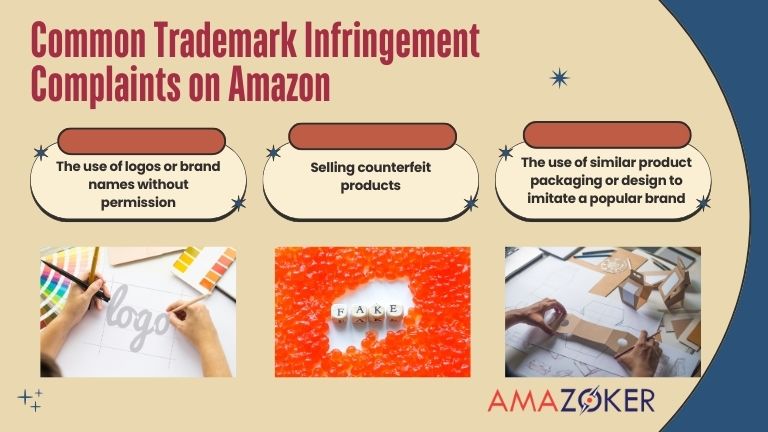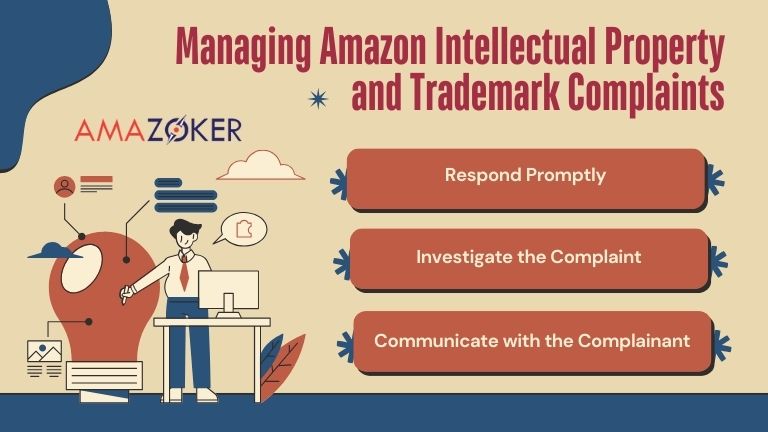As an Amazon seller, it is crucial to understand the importance of trademark infringement prevention. With millions of products being sold on Amazon, it is easy for your product to get lost in the sea of competition. However, this does not mean that you can take shortcuts and use someone else’s trademark without permission. Not only is it unethical, but it can also lead to serious legal consequences. In this blog post, we will discuss how to avoid trademark infringement complaints on Amazon.
Table of Contents
- Amazon Trademark Infringement Policy
- Common Trademark Infringement Complaints on Amazon
- Managing Amazon Intellectual Property and Trademark Complaints
- What Happens When a Seller Infringes Your Trademark?
- How to Avoid Infringement of Trademark Complaints on Amazon
- How Do I Tell If a Product is Trademark Protected?
Amazon Trademark Infringement Policy
Before diving into the details of trademark infringement prevention, it is essential to understand Amazon’s policies regarding trademarks. According to Amazon’s Intellectual Property Policy, sellers are responsible for ensuring that their products do not infringe upon any intellectual property rights, including trademarks. This means that as a seller, you are responsible for ensuring that your product does not use any logos, slogans, or brand names that belong to another company without their permission.
Amazon also has a strict policy against counterfeit products, which includes using someone else’s trademark without authorization. If a seller is found to be violating these policies, they may face penalties such as account suspension or even legal action from the trademark owner.
Common Trademark Infringement Complaints on Amazon
There are several common trademark infringement complaints that sellers may encounter on Amazon. These include using a brand name or logo that is similar to a trademarked name, selling counterfeit products, or using copyrighted images without permission. It is important for sellers to be vigilant and avoid engaging in any activities that could potentially lead to a trademark infringement complaint.
One of the most common trademark infringement complaints on Amazon is the use of logos or brand names without permission. This can happen when a seller uses a popular brand name or logo in their product title, description, or images to attract customers. This not only misleads customers but also violates the trademark owner’s rights.
Another common complaint is the use of similar product packaging or design to imitate a popular brand. This can confuse customers and harm the reputation of the original brand. Additionally, some sellers may try to sell counterfeit products by using a well-known brand name without authorization.

Three trademark infringement complaints are frequently faced by sellers on Amazon
Managing Amazon Intellectual Property and Trademark Complaints
If you receive trademark infringement complaints from Amazon or a trademark owner, it is crucial to handle it promptly and efficiently. Ignoring such complaints can lead to serious consequences, including account suspension or legal action. Here are some steps you can take to manage intellectual property and trademark complaints on Amazon:
Respond Promptly
When you receive a complaint, make sure to respond to it as soon as possible. This shows that you take the matter seriously and are willing to resolve it. Ignoring the complaint can make the situation worse and may result in your account being suspended.
Investigate the Complaint
Before responding to the complaint, it is essential to investigate the issue thoroughly. Check if the product in question does indeed infringe upon the trademark owner’s rights. If it does, take immediate action to remove the product from your listings.
Communicate with the Complainant
If the complaint is from a trademark owner, it is best to communicate with them directly. Apologize for the infringement and assure them that you have taken necessary actions to resolve the issue. If possible, offer to compensate them for any damages caused by the infringement.

Steps to manage intellectual property and trademark complaints on Amazon
What Happens When a Seller Infringes Your Trademark?
As an Amazon seller, it is not only important to prevent trademark infringement complaints but also to protect your own trademarks. If you find that another seller is using your trademark without permission, here are some steps you can take:
- Contact the seller directly and ask them to stop using your trademark.
- If the seller refuses to comply, you can file a complaint with Amazon’s Brand Registry program.
- You can also seek legal action against the seller for trademark infringement.
How to Avoid Infringement of Trademark Complaints on Amazon
Now that we have discussed the consequences of Amazon trademark infringement complaints and how to handle them, let’s look at some ways to avoid such issues in the first place.

Guideline for avoiding trademark infringement complaints
Steer Clear of Hijacking
Hijacking is a common practice on Amazon where a seller takes over an existing product listing by using the same ASIN. This can happen when a seller runs out of stock, and another seller starts selling the same product under their own brand name. To prevent this, make sure to register your brand with Amazon’s Brand Registry program. This will give you more control over your product listings and help you protect your trademarks.
Vet Your Suppliers
If you are sourcing products from a supplier, it is crucial to ensure that they are not using someone else’s trademark without permission. Before finalizing a deal with a supplier, ask for their trademark registration documents and verify them. You can also use third-party services to check if the supplier’s products infringe upon any trademarks.
Mind Your Language
When creating product titles, descriptions, and images, make sure to avoid using any logos, slogans, or brand names that belong to another company. Even if you are selling a genuine product, using someone else’s trademark without permission can lead to serious consequences.
How Do I Tell If a Product is Trademark Protected?
It can be challenging to determine if a product is trademark protected, especially if you are new to selling on Amazon. Here are some ways to check if a product is trademark protected:
- Use Amazon’s Brand Registry program to search for registered trademarks.
- Check the USPTO (United States Patent and Trademark Office) website for registered trademarks.
- Use third-party tools such as Trademarkia or LegalForce to search for registered trademarks.
By following the tips mentioned in this blog post, you can avoid trademark infringement complaints and protect your own trademarks. Trademark infringement is a serious issue that can have severe consequences for Amazon sellers. It is crucial to understand Amazon’s policies regarding trademarks and take necessary steps to prevent infringement. Remember, prevention is always better than dealing with the consequences of infringement. So, make sure to do your due diligence and stay on the right side of the law while selling on Amazon.
Read more:









